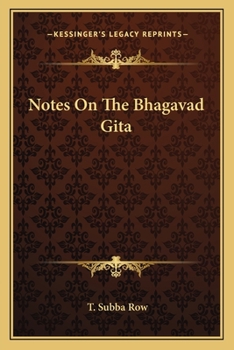The Bhagavad-Gita is part of the vast Hindu Epic, the Mahabarat. It is written in 700 verses and describes the conversation between a young man named Arjuna and God in the form of Krishna.
The Gita operates on various levels: poetry, scripture, philosophy and as a guide for spiritual development. Commentators see the setting of the Gita in a battlefield as an allegory for the ethical and moral struggles of humans. The Gita is also about action and non-action, and introduces us to the concepts of karma and dharma, as well as the three qualities of the mind, the three gunas – tamas, rajas and sattva.
The Bhagavad Gita opens with blind King Dhritarashtra asking his secretary, Sanjaya, to narrate the battle for control of Hastinapura between his sons, the Kauravas, and their cousins, the Pandavas. The Kauravas are not the rightful heirs to the kingdom, but they have assumed control, and Dhritarashtra is trying to preserve it for his son Duryodhana. Sanjaya tells of Arjuna, who has come as leader of the Pandavas to take back his kingdom, with Krishna first as his charioteer until Arjuna surrenders to Lord Krishna and requests the Lord to instruct him.
Arjuna believes that killing is evil and that killing one’s family is the greatest sin of all and therefore puts down his weapons and refuses to fight. Consequently Lord Krishna starts to explain to Arjuna why it is his dharmic duty to fight and how he must fight in order to restore his karma.
Lord Krishna talks about reincarnation and explains the eternal cycle of birth, suffering, death and rebirth. The purpose of this cycle is to allow a person to work off their karma, accumulated through lifetimes of action. If a person completes actions selflessly, in service to God, then they can work off their karma, eventually leading to enlightenment. If people act selfishly, then they keep accumulating karmic debt.
Krishna presents three main concepts for achieving enlightenment– renunciation, selfless service, and meditation. All three are elements for achieving ‘yoga,’ the union with the Divine. Krishna says that the truly divine human does not renounce all worldly possessions or simply give up action, but rather finds peace in completing action in the highest service to God and without being attached to the outcome. As a result, a person must be aware of the three qualities of the mind – the three gunas – and avoid their traps: rajas (activity, anger), tamas (ignorance, lethargy), and sattva (existence, reality).
Sattva could be the hardest trap to overcome because it could captivate one with its bliss attained on this stage. It entails qualities such as harmoniousness, calmness of mind, a highly developed consciousness, the ability to control one’s emotions, prevalence of the state of subtle and joyful love, absence of ego-centrism and violence. Krishna emphasizes that one has to go higher than sattva, to merge with God, and this calls for new efforts, new struggles with oneself. It is impossible to bypass the sattva guna. It is impossible to merge with God without mastering the qualities inherent to this guna.
Krishna says that he who achieves divine union with him in meditation will ultimately find freedom from the endless cycle of rebirth and death.
Arjuna suddenly understands enlightenment when Krishna appears to him in his divine state, and now has complete faith in the yogic path. At that point Krishna reveals to him that love comes from a person’s selfless devotion to the divine, in addition to an understanding that the body is subject to endless rebirth until humans let go of their body’s cravings and temptations and aversions to end that cycle.
The Gita ends with Krishna telling Arjuna he must choose the path of good or evil, as it is his duty to fight the Kauravas for his kingdom. That way he is correcting the balance of good and evil, fulfilling his dharma, and offering the deepest form of selfless service. After hearing the instructions of Sri Krishna, Arjuna is ready to fight.
Sanjaya, after narrating this conversation to Dhritarashtra, predicts victory for Arjuna, the supreme archer, for he is surrendered to Krishna, the master of all mystics
There are numerous versions, commentaries and summaries online. I have purchased quite a few of them. My favorite version is by Swami Chinmayanada and it can be found online now. However, it’s very detailed and is about 1500 pages long. I also have the kindle edition of Bhagavad Gita: The Song of God. The appendix of this edition contains an explanation of the cosmology of the Gita and explains concepts such as Brahman, the three aspects of Ishwara, Prakriti and points out that Hinduism accepts the belief in many divine incarnations, including Krishna, Buddha and Jesus, and foresees that there will be many more. I also have read the interpretation by Swami Chinmayanada which is excellent but very detailed.
I also love the Notes on the Bhagavad Gita by T. Subba Row, an Indian Theosophist, very helpful and inspiring.
Many of the concepts addressed in the Bhagavad Gita are also addressed in other writings. For example, Reincarnation and Karma Edgar Cayce, in Theosophy, bei Elizabeth Clare Prophet or in the Gnostic Gospels. Destiny is addressed by Elisabeth Haich, moral struggles and renunciation in the Yoga Sutras, or not being attached to the outcome of our actions.
My favorite German Theosophist, Dr. Franz Hartmann argues in his book “Yoga and Christianity” that the true Christian doctrine is, in essence, identical to the Yoga system of India.
